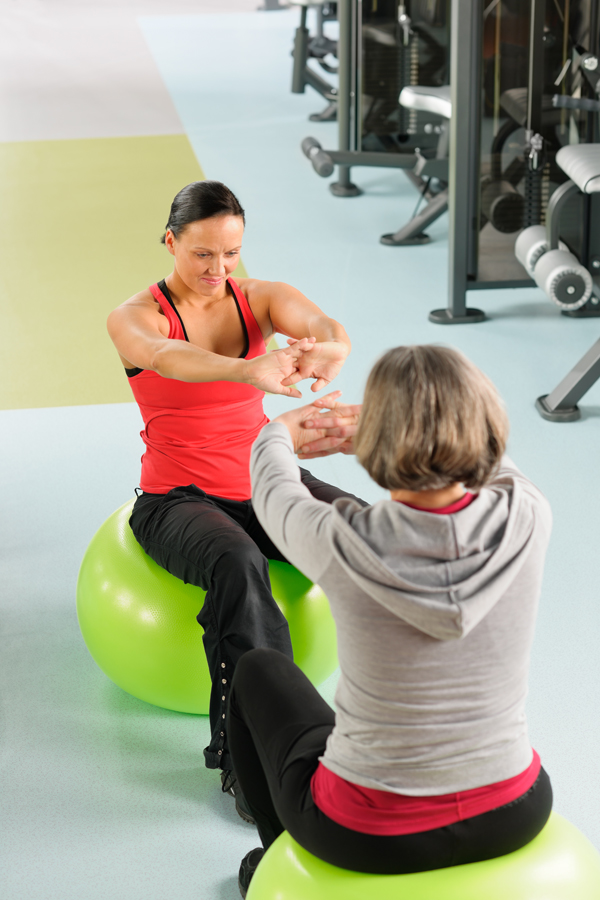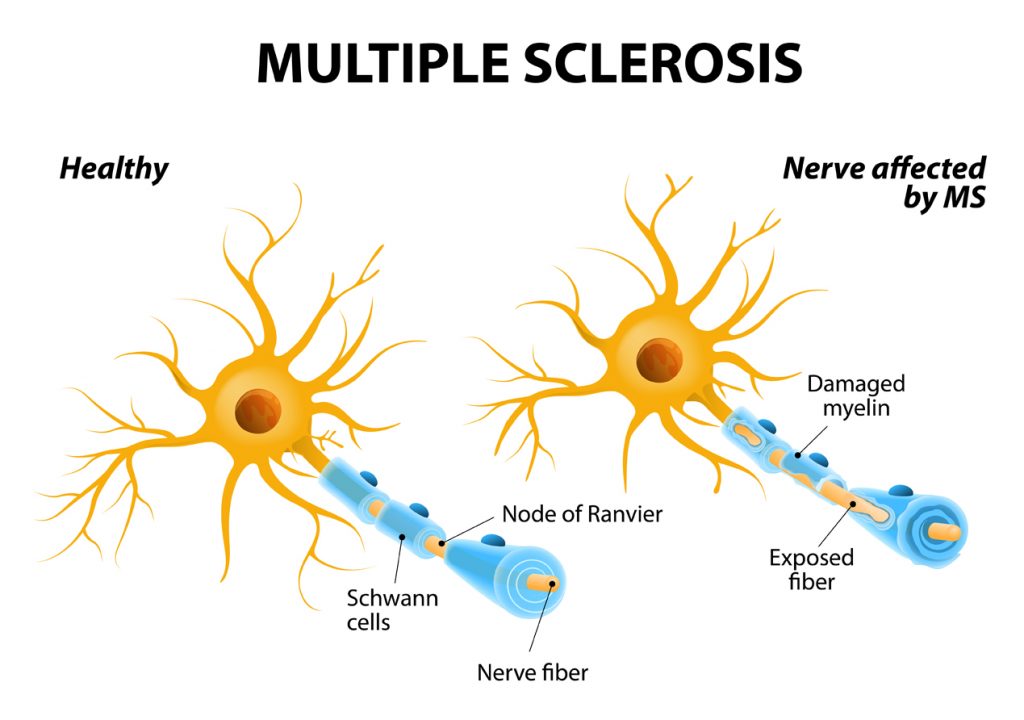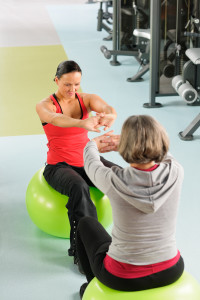Alzheimer’s and Dementia: Differences and Prevention Methods
Laymen (and even medical professionals) still often have difficulty recognizing dementia, as opposed to Alzheimer’s disease.
And while the symptoms and even some of the prevention methods may be similar, we need to find a better way to distinguish between the two if we are to provide the best level of care to patients.
 Let’s explore some of the traits of each, and examine how we can prevent them:
Let’s explore some of the traits of each, and examine how we can prevent them:
Dementia vs. Alzheimer’s disease: differences and similarities
Dementia is an umbrella term used to denote a decline in mental ability that is severe enough to interfere with daily life. As opposed to Alzheimer’s, it is not a specific disease.
What do we know about Alzheimer’s disease?
Alzheimer’s is a degenerative brain disease, where plaques containing beta-amyloid form in the brain, causing cell damage and complex changes. This damage results in dementia symptoms that will get worse as time goes on. It is also one of the most common causes of dementia. Dementia can also be caused by Huntington’s disease, Parkinson’s disease, and Creutzfeldt-Jakob disease.
While it most often occurs in patients over the age of 60, early-onset Alzheimer’s can begin to show symptoms after the age of 30, typically in patients with a family history of the disease. It is believed these cases account for around 5% of the total number of patients with Alzheimer’s.
Alzheimer’s is currently the sixth leading cause of death in the US, and possibly third as a cause of death in the elderly.
One of the most typical early signs of Alzheimer’s is trouble retaining recent information, as the disease tends to affect the part of the cerebrum that is associated with learning first.
Other symptoms, in no particular order of severity and manifestation, include:
- Impaired reasoning and judgment: leads to poor decision-making and can bring the patient in harm’s way
- Impaired visuospatial abilities, caused by eyesight problems: leads to the inability to recognize people and objects
- Impaired use of language: including speaking, writing, and reading
- Changes in behavior and personality
The main challenge we face in the treatment of Alzheimer’s disease is understanding its underlying causes. While we know it is caused by changes and damage to brain cells, the cause of these changes remains unknown to this day.
What do we know about dementia?
Patients suffering from dementia have trouble keeping track of time and space. They become repetitive, their judgment is impaired and they often forget to eat, bathe, and perform the simplest tasks.
The early warning signs of dementia include, but are not limited to:
- Mood swings
- Forgetfulness
- Confusion
- Apathy
- Repetitiveness
- Impaired sense of orientation
- Delusions
- Impaired speech
- Impaired focus and organizational skills
- Impaired memory, especially day-to-day retention
Dementia patients are mostly unaware of their symptoms, and their loved ones are the ones to notice they’re losing their keys, mixing up dates, and forgetting to take the trash out.
There are several types of dementia we have been able to identify:
- Vascular dementia: caused by a lack of oxygen to the brain
- Dementia with Lewy bodies: caused by a build-up of a protein called alpha-synuclein in the cortex.
- Frontotemporal dementia: caused by the loss of nerve cells in the front and side areas of the brain.
- Mixed dementia: resulting from several different causes
Dementia can also be caused by brain tumors, HIV, Niemann-Pick disease type C, progressive supranuclear palsy, and other diseases or conditions.
To sum it up: dementia, as a cluster of symptoms, and Alzheimer’s, as a specific disease (and the leading cause of dementia), naturally share the same symptoms.
Treatment
The treatment of dementia will depend on its underlying cause. When caused by Alzheimer’s, there is no cure for it, and there is no treatment that can stop its progression. There are treatments that will combat some of the lesser or more severe symptoms, but we haven’t yet found a way to reverse or pause the ongoing damage.
This fact alone is the cause of much despair among the families of patients suffering from any form of dementia.
There are signs that the early detection and treatment of Alzheimer’s can improve patient quality of life. And when that’s all that’s left in the absence of a cure, it becomes even more imperative we do our best to prevent this disease.
Prevention methods
Evidence has been found that the risk factors that cause heart disease, including high blood pressure, high cholesterol, and diabetes may also contribute to the development of Alzheimer’s.
However, there is no sufficient evidence to provide any substantial proof as of yet. The prevention methods recommended for dementia and Alzheimer’s focus on improving overall health and exercising your brain.
Some of the courses we can advise our patients include:
- Balanced diet. As opposed to the umbrella term the web tends to use, let’s focus more on tailoring diets to individuals. What works well for one patient will not work for another, and encouraging intuitive eating and adapting one’s diet to your own lifestyle and needs should come more into focus.
Naturally, this diet should focus on eating 80% of the foods that are actually good for us, and getting most of our nutrition from fruits, vegetables, and lean meats, as opposed to fast food choices and high-sugar options. Cutting down on caffeine and alcohol intake can also prove beneficial.
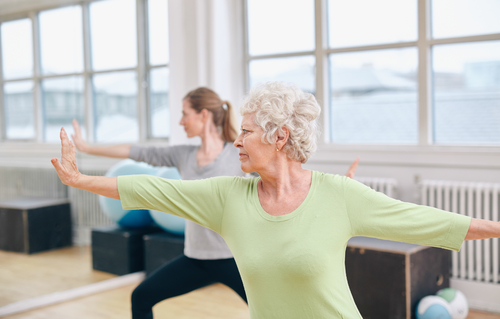 Movement is one of the keys to preventing any disease, and encouraging at least three 30-minute sessions per week should be imperative. As diets, exercise regimes should be tailored to a patient’s needs and preferences. Instead of being made a chore, regular exercise should be an enjoyment and a clear avenue to improved overall health.
Movement is one of the keys to preventing any disease, and encouraging at least three 30-minute sessions per week should be imperative. As diets, exercise regimes should be tailored to a patient’s needs and preferences. Instead of being made a chore, regular exercise should be an enjoyment and a clear avenue to improved overall health.- We tend to overlook sleep as one of the equal members of the health trifecta. Teaching sleep techniques should become more widespread, as the pace of modern living continues to speed up.
- Stress-relief. Undoubtedly one of the top contributing factors to any disease, stress takes a toll on our bodies in a way we don’t even fully understand. While eliminating it will be impossible, and while it may even be beneficial in small doses, removing stress as a detrimental factor should be the focus of any preventative course of action. Whether this is achieved by yoga, breathing exercises, meditation, mindfulness practices, exercise, reading, journaling, or any other method, should be up to the individual.
- Brain training. It is also recommended to keep your brain working and engaged by reading, solving puzzles, and trying to teach it to think in new ways. Improving the neural connections in our brains will help prevent the degeneration of cells that lead to dementia.
- Finally, let me advocate an unconventional remedy – smiling. It has been proven that smiling and the feeling of joy can be beneficial in patient recovery, and it can also serve as a great prevention method. While the science is still vague on how connected happy hormones and chemicals are with the reduced risk of degenerative brain disease, we can try anything in our power to diminish our risk factors.
Conclusion
Alongside heart disease and cancer, Alzheimer’s and dementia remain the most explored and discussed diseases of our time. We may not see a cure for any of them in our lifetime, and that’s all the more reason to remain vigilant in trying to prevent them. A large part of these prevention efforts entails exploring different avenues in achieving a healthier body and mind, as this remains the only course available to us at the time.
Sarah Kaminski earned her bachelor’s degree in Health Sciences. Due to her parent’s declining health, she decided to become their full-time caregiver. Now, she takes care of her loved ones and writes about the things she learned along the way. Sarah is a life enjoyer, positivity seeker, and a curiosity enthusiast. She is passionate about an eco-friendly lifestyle and adores her cats. She is an avid reader who loves to travel when time allows.
References:
- (2019, October 23). Alzheimer’s Disease Fact Sheet – National Institute on Aging. Retrieved October 30, 2019, from https://www.nia.nih.gov/health/alzheimers-disease-fact-sheet
- (2013, July 22). Alzheimer’s Disease Clinical and Research Update … – Hindawi. Retrieved October 30, 2019, from https://www.hindawi.com/journals/jar/2013/207178/
- (2014, May 22). Number of Alzheimer’s deaths found to be underreported. Retrieved October 30, 2019, from https://www.nia.nih.gov/news/number-alzheimers-deaths-found-be-underreported
- (2017, October 4). What Causes Dementia? | BrightFocus Foundation. Retrieved October 30, 2019, from https://www.brightfocus.org/alzheimers/article/what-causes-dementia
- (2019, March 21). Early Detection & Treatment of Alzheimer’s Can Improve Life …. Retrieved October 30, 2019, from https://www.bayalarmmedical.com/medical-alert-blog/early-detection-treatment-of-alzheimers-disease-can-improve-quality-of-life/
- (2002, June 20). Physical Activity Fundamental To Preventing Disease | ASPE. Retrieved October 30, 2019, from https://aspe.hhs.gov/basic-report/physical-activity-fundamental-preventing-disease
- (2014, November 14). Stress and Disease – Conditions that May Be Caused … – AARP. Retrieved October 30, 2019, from https://www.aarp.org/health/healthy-living/info-2014/stress-and-disease.html
- (n.d.). Don’t Worry and Be Positive: What helps the most in … – NCBI. Retrieved October 30, 2019, from https://www.ncbi.nlm.nih.gov/pmc/articles/PMC2729270/


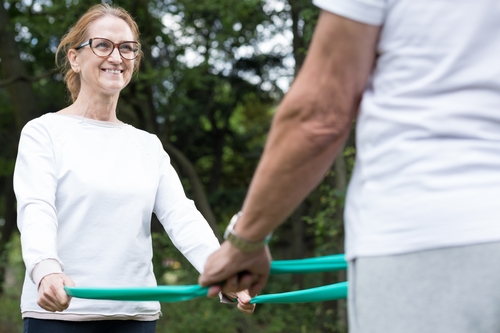
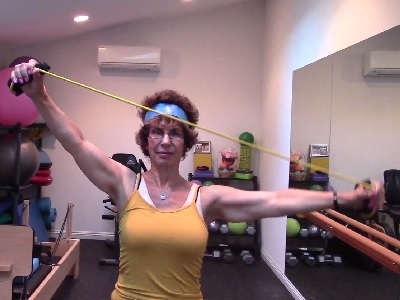
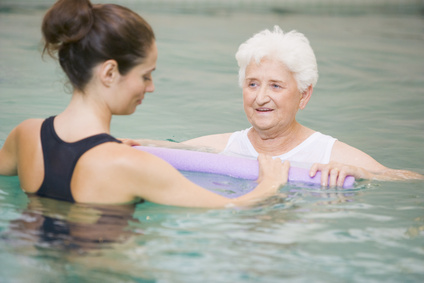
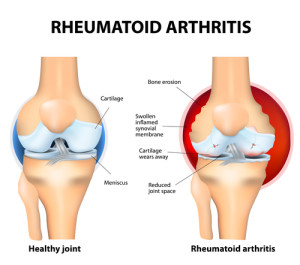 When left unchecked, rheumatoid arthritis can be majorly debilitating and cause real and continued pain. However, if you’re willing to do the research and put in the work, you can do certain exercises which can majorly reduce the symptoms, improve your overall mood and actually make you that much physically healthier, generally speaking, which can only be a good thing. The real question then is, what sort of exercises ought you be doing to try and achieve this. Well, let’s take a look at five ways to help improve those symptoms.
When left unchecked, rheumatoid arthritis can be majorly debilitating and cause real and continued pain. However, if you’re willing to do the research and put in the work, you can do certain exercises which can majorly reduce the symptoms, improve your overall mood and actually make you that much physically healthier, generally speaking, which can only be a good thing. The real question then is, what sort of exercises ought you be doing to try and achieve this. Well, let’s take a look at five ways to help improve those symptoms.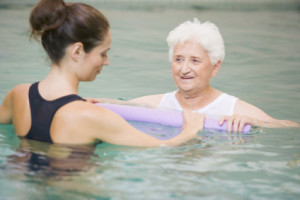

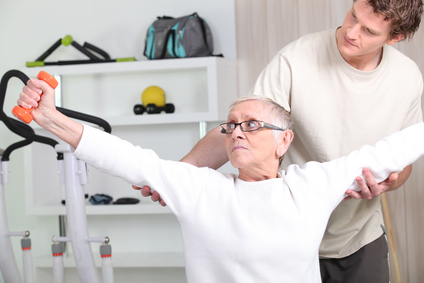 The most important factor in the safety and efficacy of the exercise program is the initial assessment. At the very least this should include a comprehensive postural assessment as well as shoulder range of motion measurements taken with a goniometer. The well-trained fitness professional will be able to deduce, from the results, which muscles need to be stretched and which need to be strengthened. By selecting the wrong combinations of exercises, the results may not only be undesirable, they may in fact be detrimental. For example, if a client presents with moderate to severe upper-crossed syndrome, performing any kind of “pushing” exercise that would involve the chest muscles (chest press), could make the syndrome even more pronounced by causing the pectoral muscles to tighten and contract. Instead, the goal need to be on stretching the chest wall and strengthening the opposing muscles in the back; particularly the scapular stabilizers.
The most important factor in the safety and efficacy of the exercise program is the initial assessment. At the very least this should include a comprehensive postural assessment as well as shoulder range of motion measurements taken with a goniometer. The well-trained fitness professional will be able to deduce, from the results, which muscles need to be stretched and which need to be strengthened. By selecting the wrong combinations of exercises, the results may not only be undesirable, they may in fact be detrimental. For example, if a client presents with moderate to severe upper-crossed syndrome, performing any kind of “pushing” exercise that would involve the chest muscles (chest press), could make the syndrome even more pronounced by causing the pectoral muscles to tighten and contract. Instead, the goal need to be on stretching the chest wall and strengthening the opposing muscles in the back; particularly the scapular stabilizers. Following the warm-up and lymph drainage exercises, the exercise specialist should determine what the areas of “need” are for the client. Remember to begin with stretching and range of motion exercises until they have close to “normal” range of motion. At that point the goal becomes strength training and choosing exercises that will strengthen the weaker muscles and stretch the tight and shortened muscles. Weight/resistance should also be very gradually increased and attention paid to any potential swelling of the extremity. Typically I chose exercises that will stretch the chest (chest fly, corner or door stretch, assisted stretching) and will strengthen the back (low/high rows, reverse flies, lat pulldown). They often [present with winged scapula following a node dissection. If this is the case, I will incorporate exercises that will strengthen the serratus anterior. If they have undergone an abdominal TRAM procedure, core work will be of the greatest importance in preventing, or minimizing, low back pain.
Following the warm-up and lymph drainage exercises, the exercise specialist should determine what the areas of “need” are for the client. Remember to begin with stretching and range of motion exercises until they have close to “normal” range of motion. At that point the goal becomes strength training and choosing exercises that will strengthen the weaker muscles and stretch the tight and shortened muscles. Weight/resistance should also be very gradually increased and attention paid to any potential swelling of the extremity. Typically I chose exercises that will stretch the chest (chest fly, corner or door stretch, assisted stretching) and will strengthen the back (low/high rows, reverse flies, lat pulldown). They often [present with winged scapula following a node dissection. If this is the case, I will incorporate exercises that will strengthen the serratus anterior. If they have undergone an abdominal TRAM procedure, core work will be of the greatest importance in preventing, or minimizing, low back pain.

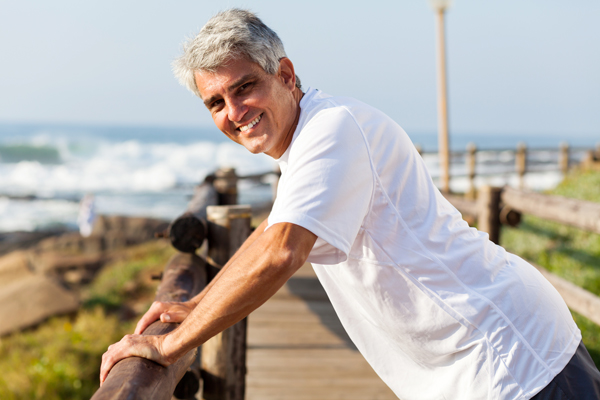
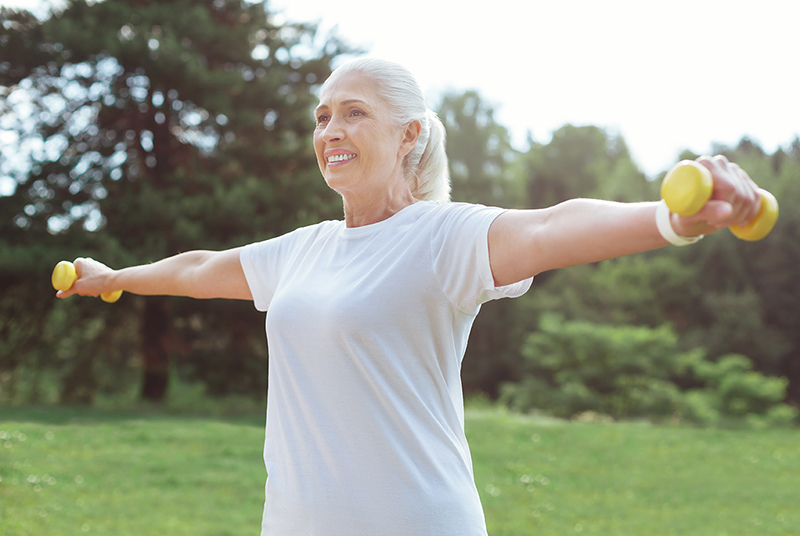 #1. Strength
#1. Strength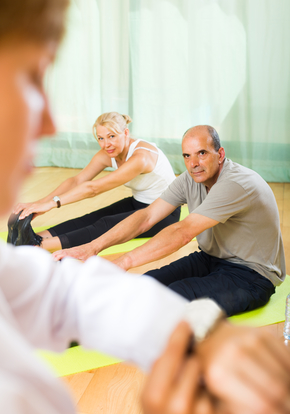 #7. Flexibility
#7. Flexibility
 Positive thinking is our default when we want to improve an area of our lives. We journal, recite affirmations, and work to build our positive thoughts. What Eker points out is that positive thinking implies that we accept our own thoughts as truth.
Positive thinking is our default when we want to improve an area of our lives. We journal, recite affirmations, and work to build our positive thoughts. What Eker points out is that positive thinking implies that we accept our own thoughts as truth.